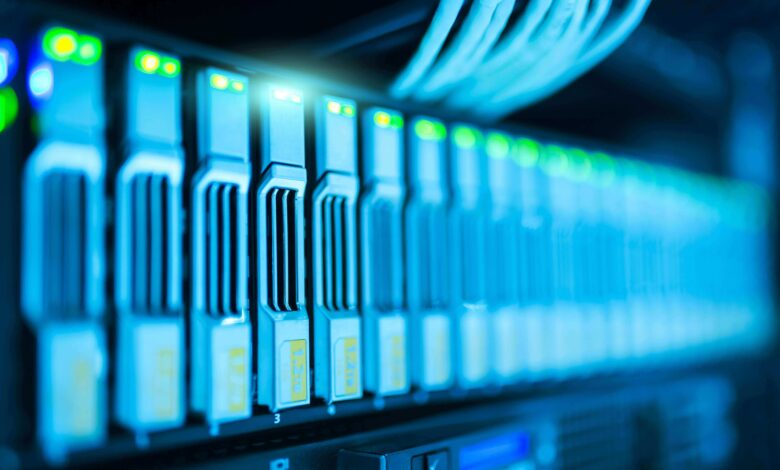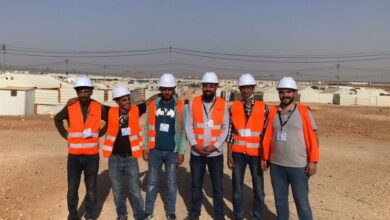
Despite a decade of progress in renewable energy development, AI infrastructure is exposing a critical gap that demands immediate attention. The challenge is that AI requires constant, dispatchable power while most renewable sources are intermittent. AI’s continuous, high-intensity energy demands require different renewable energy solutions than previous computing generations.
Understanding AI’s Unique Energy Profile
AI data centers represent a new category of energy demand. The Department of Energy projects that data centers could consume between 6.7% and 12% of total U.S. electricity demand by 2028. But the raw numbers only tell part of the story.
What makes AI different is the consistency and intensity of its energy requirements. Traditional data centers have variable loads with predictable patterns. AI training and inference operations run continuously, often at maximum capacity, with minimal flexibility for load shifting or demand response.
The International Energy Agency warns that AI-optimized data centers alone could see their electricity demand more than quadruple by 2030. This isn’t just about scale; it’s about a fundamental shift in how we think about powering critical infrastructure.
The Engineering Reality of Intermittency
Current renewable energy strategies work well for many applications, but they reveal limitations when applied to AI’s operational requirements. Solar generation follows predictable daily cycles, peaking at midday and dropping to zero overnight. Wind patterns vary by region and season, with capacity factors typically ranging from 25% to 45%.
For most commercial and industrial applications, this intermittency can be managed through demand flexibility, grid storage, and load balancing. AI workloads offer less flexibility. Training large language models or running real-time inference can’t simply pause when renewable generation drops.
The bigger challenge is transmission capacity. Even with abundant wind and solar, renewable resources are often located far from data centers, and the grid lacks sufficient infrastructure to deliver that power where it’s needed. This creates both timing and location mismatches that compound AI’s 24/7 energy requirements.
Current battery storage solutions, typically provide 2-4 hours of discharge capacity. Extending this to cover full overnight periods or multi-day weather events requires exponentially larger installations, significantly impacting project economics and land requirements.
The Infrastructure Response
The industry’s response to this challenge has been pragmatic but problematic from a climate perspective. Industry analyses suggest natural gas-fired power plants are often viewed as the primary means to meet AI’s rapidly growing demand, valued for their reliability and relatively quick deployment timelines.
This isn’t necessarily a failure of corporate climate commitments. Many companies are genuinely working toward sustainability goals while facing the immediate operational reality of powering AI infrastructure. The Western Energy Alliance argues that natural gas serves as essential “bridge” infrastructure for AI development.
The challenge with bridge solutions is their durability. Power generation infrastructure typically operates for 20-30 years. What starts as temporary backup can easily become long-term dependence, especially when that infrastructure is needed to maintain competitive AI capabilities.
Current Accounting Frameworks
Meanwhile, corporate sustainability reporting has adapted to accommodate these realities through various mechanisms: renewable energy certificates, annual matching schemes, and complex offsetting arrangements. Recent developments show how companies are working to achieve renewable energy goals through strategic procurement and investment.
Some organizations have faced supply chain emission increases despite operational improvements, highlighting the complex relationship between AI infrastructure expansion and overall carbon footprint.
These aren’t accounting tricks or greenwashing. They represent the current best practices for managing renewable energy procurement in a grid system that wasn’t designed for AI’s unique load profile. But they also highlight the gap between current renewable energy frameworks and what AI infrastructure actually requires.
Toward Dispatchable Renewable Solutions
The path forward requires renewable energy technologies that can match AI’s operational requirements: continuous, dispatchable power available 24/7. This means developing more economical and scalable approaches to renewable energy storage that can deploy faster and more flexibly than traditional solutions.
Exowatt, have focused on thermal energy storage as a solution to solar’s intermittency challenge. Instead of converting sunlight directly to electricity, their systems capture solar energy as heat, store it in thermal batteries, and convert it to electricity when needed. This approach can provide 24 hour dispatchable energy from renewable sources.
The technology isn’t theoretical. Systems can provide up to 24 hours of continuous power from captured solar energy, using abundant materials and avoiding supply chain dependencies on rare earth minerals. This approach addresses both the intermittency challenge and the cost constraints that have limited extended-duration storage options.
Nuclear as Baseload Clean Energy
Other companies are exploring nuclear power as a solution to AI’s baseload requirements. Meta recently signed a 20-year power purchase agreement with Constellation Energy for over 1,100 MW of nuclear capacity, specifically to support AI operations.
Nuclear power offers exceptional reliability, with capacity factors often exceeding 90%, making it well-suited for AI’s continuous energy requirements. The Department of Energy actively supports nuclear energy scaling, including Small Modular Reactors, as a viable option for data center applications.
The timeline challenge with nuclear is significant. New nuclear projects typically require years to develop and deploy, while AI energy needs are growing immediately. This creates an opportunity for technologies that can provide clean, dispatchable power more quickly while longer-term nuclear capacity comes online.
Grid Independence and Rapid Deployment
Another emerging approach involves reducing dependence on traditional grid infrastructure. Systems that can operate with or without grid interconnection allow AI infrastructure to deploy more quickly, avoiding interconnection queues that can extend several years in some regions.
This “behind-the-meter” approach enables faster deployment of both AI infrastructure and clean energy systems. Co-location of data centers with renewable energy projects is becoming more common, allowing direct power delivery without transmission losses or grid constraints.
For companies racing to deploy AI infrastructure, deployment speed often matters as much as sustainability credentials. Technologies that can provide both rapid deployment and genuine clean energy offer competitive advantages beyond environmental benefits.
Economic Competitiveness
The economics of dispatchable renewable energy are improving rapidly. The economics of dispatchable renewable energy are improving rapidly, with emerging technologies targeting cost parity with conventional generation sources.
When dispatchable renewable power can compete on cost with natural gas, the economic case for fossil fuel backup infrastructure weakens significantly. This shift transforms sustainability from a premium choice to a competitive advantage.
Modular deployment approaches also enable AI infrastructure to scale more efficiently. Instead of waiting for large utility-scale projects, data center operators can deploy clean energy capacity incrementally as their computing requirements grow.
Policy and Regulatory Evolution
Government policy is beginning to address these realities. The Department of Energy has identified over 30 programs supporting clean energy for data centers, including onsite generation strategies and innovative rate structures.
European regulations are implementing mandatory reporting requirements for data center energy performance, including renewable energy usage metrics. Similar frameworks are likely to develop in the United States, making operational sustainability a compliance requirement rather than just a voluntary commitment.
The companies that develop genuine solutions to AI’s clean energy challenge will benefit from both regulatory compliance and competitive positioning as these requirements evolve.
Engineering Solutions for Tomorrow’s Infrastructure
AI represents a fundamental shift in how we use energy, requiring infrastructure solutions designed for its unique operational profile. The renewable energy strategies that worked for previous generations of computing infrastructure need to evolve to match AI’s requirements.
This evolution is already happening. Technologies that provide truly dispatchable renewable energy are moving from research to commercial deployment. Nuclear power is finding new applications in data center infrastructure. Grid-independent renewable systems are enabling faster deployment of clean AI infrastructure.
The companies that recognize this shift and invest in appropriate energy infrastructure will have both competitive and environmental advantages. Those that continue applying yesterday’s renewable energy frameworks to tomorrow’s AI infrastructure will face increasing challenges as both energy costs and regulatory requirements evolve.
From an engineering perspective, the solutions exist today. Dispatchable renewable energy technologies can match AI’s operational requirements while meeting cost and deployment timeline constraints. The question is how quickly these solutions can scale to match the growth rate of AI infrastructure.
The AI revolution is reshaping energy demand. The renewable energy sector is adapting to meet that challenge with technologies designed for AI’s unique requirements. The intersection of these trends represents both an enormous opportunity and a critical responsibility for our industry.





